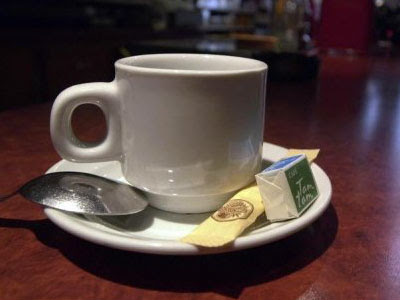 |
| Super-Earth” Planet |
Light glowing from a "super-Earth" planet beyond our solar system has been detected by Nasa’s Spitzer Telescope.
Until now, scientists have never been able to detect infrared light emanating from 55 Cancri E, a super-hot extrasolar planet twice the size and eight times the mass of our own.
Experts are hailing the latest discovery as a historic step towards the eventual search for signs of life on other planets.
55 Cancri E is one of five exoplanets orbiting a bright star named 55 Cancri in a solar system lying in the constellation of Cancer (The Crab).
Previously, Spitzer and other telescopes were able to study the planet by observing how the light from 55 Cancri changed as the planet passed in front of the star.
In the new study, Spitzer instead measured how much infrared light came from the planet itself – revealing some of the planet’s major features.
At 41-light years from Earth, the giant planet is considered uninhabitable.
The giant planet is tidally locked, so one side always faces the star. The telescope found that the sun-facing side is extremely hot, indicating the planet probably does not have a substantial atmosphere to carry the sun's heat to the unlit side.
On its sun-facing side, the surface has a temperature of 1,727 Celsius – or 3,140 degrees Fahrenheit – That’s hot enough to melt silver or aluminium.
It is calculated that one year on the alien planet lasts just 18 hours.
The new findings are consistent with a previous theory that 55 Cancri E is a water world: A rocky core surrounded by a layer of water in a "supercritical" state where it is both liquid and gas, and topped by a blanket of steam.
Bill Danchi, Spitzer programme scientist at NASA, said: “Spitzer has amazed us yet again. The spacecraft is pioneering the study of atmospheres of distant planets and paving the way for NASA's upcoming James Webb Space Telescope to apply a similar technique on potentially habitable planets.”
Michael Werner, who also works on the Spitzer project, added: “When we conceived of Spitzer more than 40 years ago, exoplanets hadn't even been discovered. Because Spitzer was built very well, it's been able to adapt to this new field and make historic advances such as this.”
The planet was first discovered in 2004 and the new findings are published in the current issue of Astrophysical Journal Letters.
Until now, scientists have never been able to detect infrared light emanating from 55 Cancri E, a super-hot extrasolar planet twice the size and eight times the mass of our own.
Experts are hailing the latest discovery as a historic step towards the eventual search for signs of life on other planets.
55 Cancri E is one of five exoplanets orbiting a bright star named 55 Cancri in a solar system lying in the constellation of Cancer (The Crab).
Previously, Spitzer and other telescopes were able to study the planet by observing how the light from 55 Cancri changed as the planet passed in front of the star.
In the new study, Spitzer instead measured how much infrared light came from the planet itself – revealing some of the planet’s major features.
At 41-light years from Earth, the giant planet is considered uninhabitable.
The giant planet is tidally locked, so one side always faces the star. The telescope found that the sun-facing side is extremely hot, indicating the planet probably does not have a substantial atmosphere to carry the sun's heat to the unlit side.
On its sun-facing side, the surface has a temperature of 1,727 Celsius – or 3,140 degrees Fahrenheit – That’s hot enough to melt silver or aluminium.
It is calculated that one year on the alien planet lasts just 18 hours.
The new findings are consistent with a previous theory that 55 Cancri E is a water world: A rocky core surrounded by a layer of water in a "supercritical" state where it is both liquid and gas, and topped by a blanket of steam.
Bill Danchi, Spitzer programme scientist at NASA, said: “Spitzer has amazed us yet again. The spacecraft is pioneering the study of atmospheres of distant planets and paving the way for NASA's upcoming James Webb Space Telescope to apply a similar technique on potentially habitable planets.”
Michael Werner, who also works on the Spitzer project, added: “When we conceived of Spitzer more than 40 years ago, exoplanets hadn't even been discovered. Because Spitzer was built very well, it's been able to adapt to this new field and make historic advances such as this.”
The planet was first discovered in 2004 and the new findings are published in the current issue of Astrophysical Journal Letters.
News by Yahoo
Read current news at http://bbc-cnn-worldnews.blogspot.com







